#mini #johncooper #works #cabrio #gp #sylt #impression #roadtrip
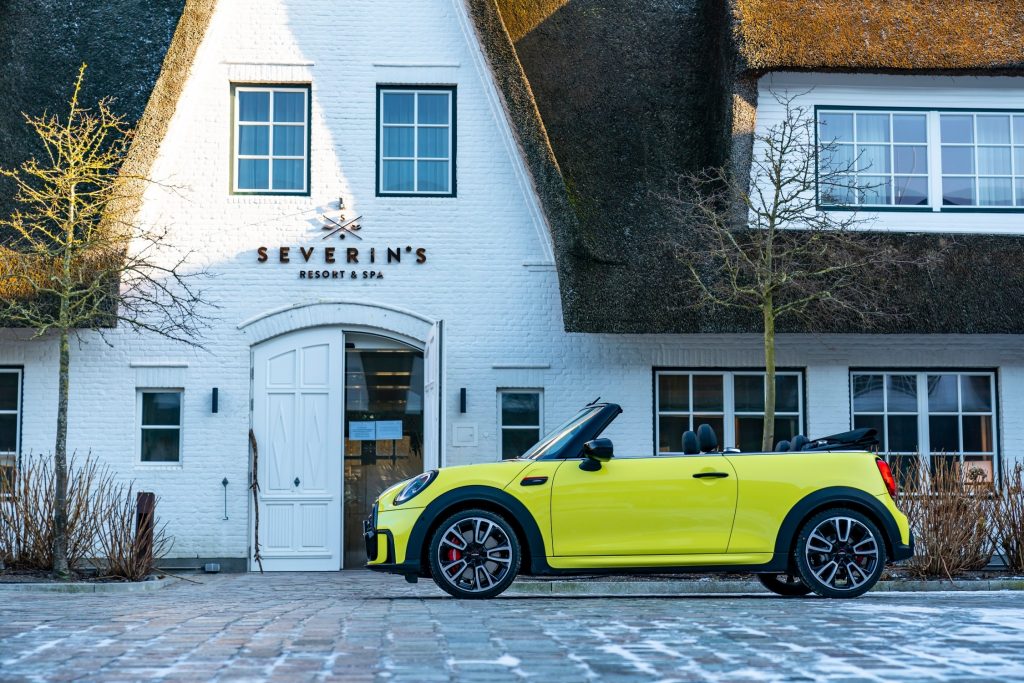
Deutschlands nördlichste Insel ist zu jeder Jahreszeit einen Besuch wert. Zwischen Watt und Wellen gibt es viel zu entdecken. In-Lokale und feine Shopping-Adressen wechseln sich ab mit ursprünglicher Natur und kilometerlangen Stränden. Und zwischendurch gibt es jede Menge Gelegenheit zu offenem Fahrspaß im MINI John Cooper Works Cabrio in salziger Nordseeluft. For english copy scroll down please.

Wenn Hamburger ganz unprätentiös von einer Fahrt „auf die Insel“ sprechen, dann klingt das oft so, als würden sie nur kurz den Stadtteil wechseln. Dabei liegt Sylt ganz oben in Nordfriesland und damit auch auf der Luftlinie noch rund 180 Kilometer von der Hansestadt entfernt. Der schnellste Weg führt über die Autobahn 7 und ist daher die ideale Wahl für einen Kurztrip mit dem MINI John Cooper Works Cabrio Ein paar Kilometer jenseits der Stadtgrenze wird das Tempolimit aufgehoben. Jetzt kann der 170 kW/231 PS starke Vierzylinder-Turbomotor des extrem sportlichen Viersitzers dafür sorgen, dass die Distanz zwischen Stadt und Insel tatsächlich von Minute zu Minute schrumpft.
Kurz vor Flensburg endet die rasante Fahrt. Von dort sind es noch knapp 50 Kilometer über Landstraßen bis zum „Sylt Shuttle“ in Niebüll. Der Parkplatz vor der Verladestation ist autoleer. Im Schritttempo rollt das MINI John Cooper Works Cabrio auf den Autozug, begleitet vom typischen „Klack, Klack, Klack“ beim Überqueren der Waggon-Fahrspuren. Nun heißt es: Motor aus, Feststellbremse anziehen, Fenster öffnen und warten. Und schon ist sie da, diese unvergleichliche Mischung aus Nordseeluft, Salz auf den Lippen und Möwengeschrei. Ein kurzes Stück fährt der Autozug durch kleine Orte und über plattes Land, dann rollen die Waggons auf den gut zehn Kilometer langen Hindenburgdamm, der 1927 eingeweiht und zum eigentlichen Motor des Sylt-Tourismus wurde. Fortan fühlten sich Künstler wie Emil Nolde, Hermann Hesse oder Stefan Zweig ebenso magisch von der Nordseeinsel angezogen wie Intellektuelle, Lebenskünstler und Schauspieler wie Marlene Dietrich, Hans Albers oder berühmte Sportler wie Max Schmeling. Thomas Mann notierte 1928 im Gästebuch der Künstlerpension „Kliffende“ in Kampen: „An diesem erschütternden Meere habe ich tief gelebt.“
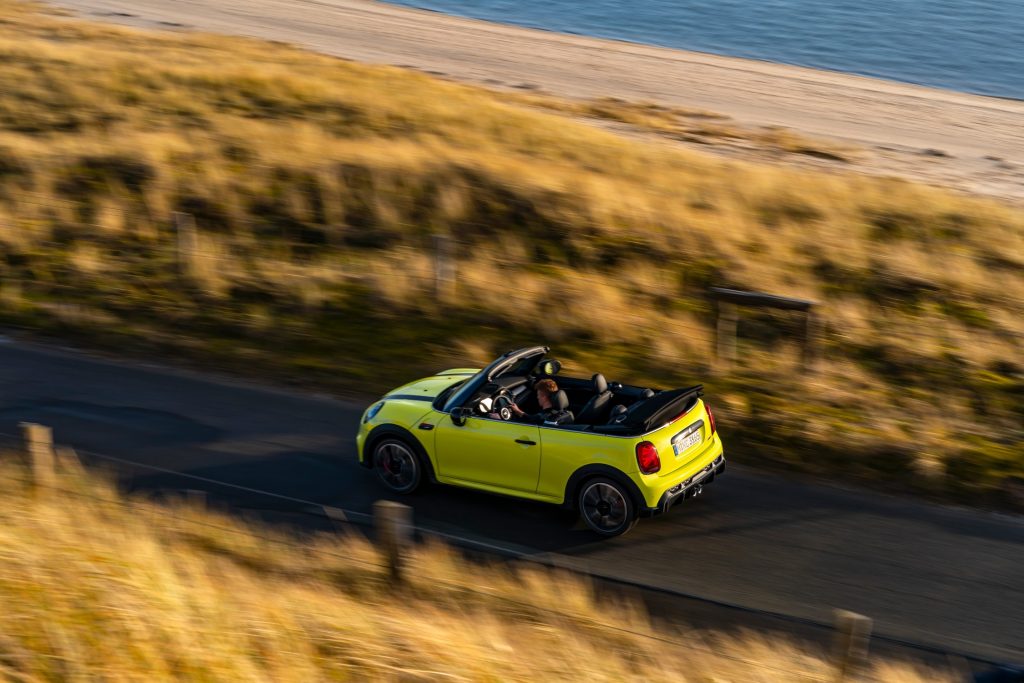
Eine knappe Stunde dauert die Überfahrt bis zum Bahnhof Westerland. Zügig geht es runter vom Autozug und auf kurzem Weg zum Hotel „Miramar“, einer der ältesten Herbergen der Insel mit grandiosem Blick über die Westerländer Kurpromenade und die See. Der Himmel ist an diesem Vormittag so blau wie auf einem Nolde-Gemälde. Am Stadtrand von Westerland wird es daher Zeit, das Verdeck zu öffnen. Das gelingt auch während der Fahrt mit maximal 30 km/h und innerhalb von 18 Sekunden. Dann spurtet das MINI John Cooper Works Cabrio die schnurgerade Landstraße in Richtung Norden entlang. Jetzt bläst der Fahrtwind in Sturmstärke ins Innere. Doch da ist noch mehr: diese intensive, salzige Seeluft, das herbe, erdige Aroma des Watts, der krautige, wilde Duft der Dünen – und eine unverwechselbare Landschaft mit kleinen Hügeln und struppigem Gras, das seine Farbe je nach Wind- und Lichteinfall verändert.
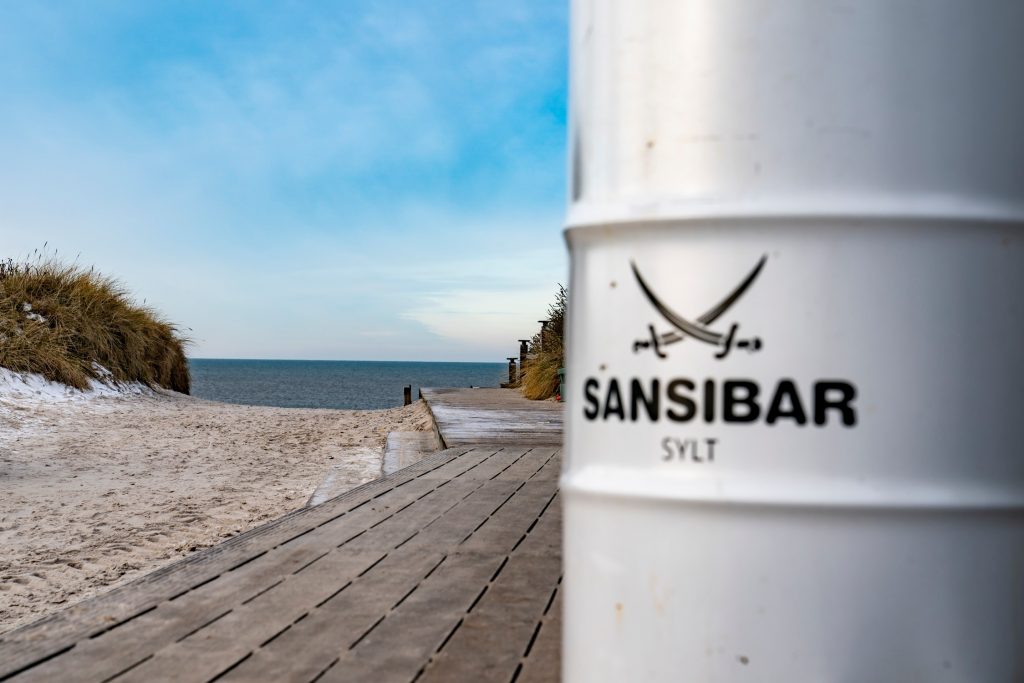
Nach gut sechs Kilometern ist Kampen erreicht. Der Ort wird von den einen geliebt wegen seines Glamours, von den anderen gemieden wegen des exaltierten Auftretens der Promis. In der Vorkriegszeit eine Künstlerkolonie, wurde Kampen in den 1960er-Jahren vom Lebemann und Fotografen Gunter Sachs aus dem Dornröschenschlaf geweckt. Der Unternehmens-Erbe feierte wilde Partys auf dem bis dahin beschaulichen Eiland – und besonders in Kampen. Auf der „Whiskymeile“, wo sich im Sommer die Luxusfahrzeuge ein Stelldichein geben, ist die Dichte derer, die sich für besonders bedeutend halten, groß. Ziemlich am Ende des Kampener Strönwai, so der richtige Name der Straße, liegt der „Pony-Club“, seit fast 60 Jahren Edelbar und Promi-Disco, der Gunter Sachs zu noch mehr Popularität verhalf, als er eines Abends mit seinem classic Mini bis direkt auf die Tanzfläche fuhr.

Auch das MINI John Cooper Works Cabrio setzt sich auf seiner Fahrt durch Kampen nicht allzu dezent in Szene. Seine Karosserielackierung in der neuen Farbe Zesty Yellow macht es überall zum Blickfang. Doch der offene Viersitzer trägt den kräftigen Farbton mit Stil. Die neue reduzierte Formensprache lenkt die Aufmerksamkeit auf die markentypischen Designmerkmale wie den hexagonalen Kühlergrill und die runden Scheinwerfer. Die Heckleuchten im Union-Jack-Design erinnern subtil an die britische Herkunft der Marke. Und auch die kraftvollen Konturen des Heckdiffusors, in dessen Mitte die beiden 85 Millimeter großen Edelstahl-Endrohre der Abgasanlage ins Freie ragen, sind ein authentisches Signal für Sportlichkeit. Das gilt auch für den Sound der Sportabgasanlage, die das temperamentvolle Spurtvermögen des offenen Top-Athleten untermalt.
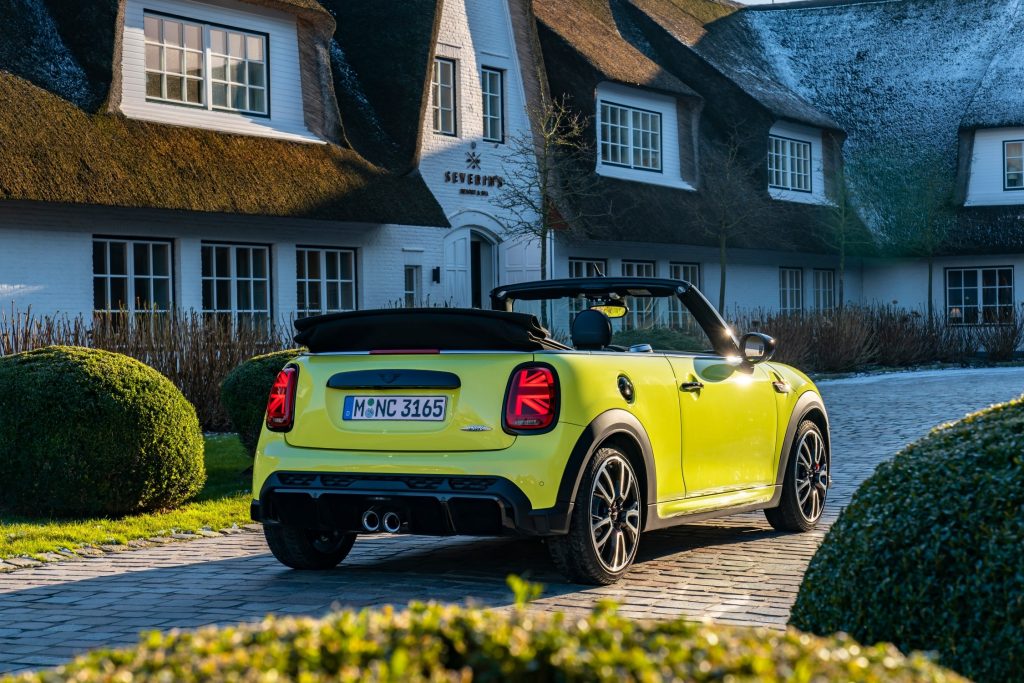



Urlaub auf Sylt ist schwer angesagt, die Nachfrage nach Unterkünften steigt und steigt – 2019 wurden 4,8 Millionen Touristen gezählt. Die Immobilienpreise erreichen schwindelerregende Höhen. Wer es sich leisten kann, will nicht mieten, sondern kaufen. Am besten eines der typischen reetgedeckten Häuser. Das Ergebnis: Ganze Ortschaften sind inzwischen Geisterstädte, in denen nur noch im Sommer und an den Wochenenden oder Feiertagen Betrieb herrscht. In Kampen sind inzwischen zwei Drittel der Häuser Ferienvillen. Gekauft werden die Häuser nicht zum Bewohnen, sondern zum Besitzen. Die Folge: Einheimische können sich ihre Insel nicht mehr leisten. Die meisten von ihnen leben inzwischen – wie auch die saisonalen Arbeitskräfte – auf dem Festland. 150 000 werden in der Hauptsaison auf Sylt gezählt. Als Einwohner gemeldet sind lediglich 20 000.
Aber Kampen führt den Besuchern auch die Vergänglichkeit vor Augen. Das „Kliffende“, eines der traditionsreichsten Sylter Gebäude, liegt nur noch 40 Meter Luftlinie von der Abbruchkante des Kampener Kliffs entfernt. Jedes Jahr nagen heftige Herbst- und Winterstürme am Kliff und die tosende See holt sich Stück für Stück. Es ist gerade einmal gut 20 Jahre her, dass fünf wohlhabende Privatiers das Haus erwarben. Jetzt müssen sie zusehen, wie sich die einst acht investierten Millionen verflüssigen – oder sie stecken noch einmal viel Geld in zusätzlichen Küstenschutz.

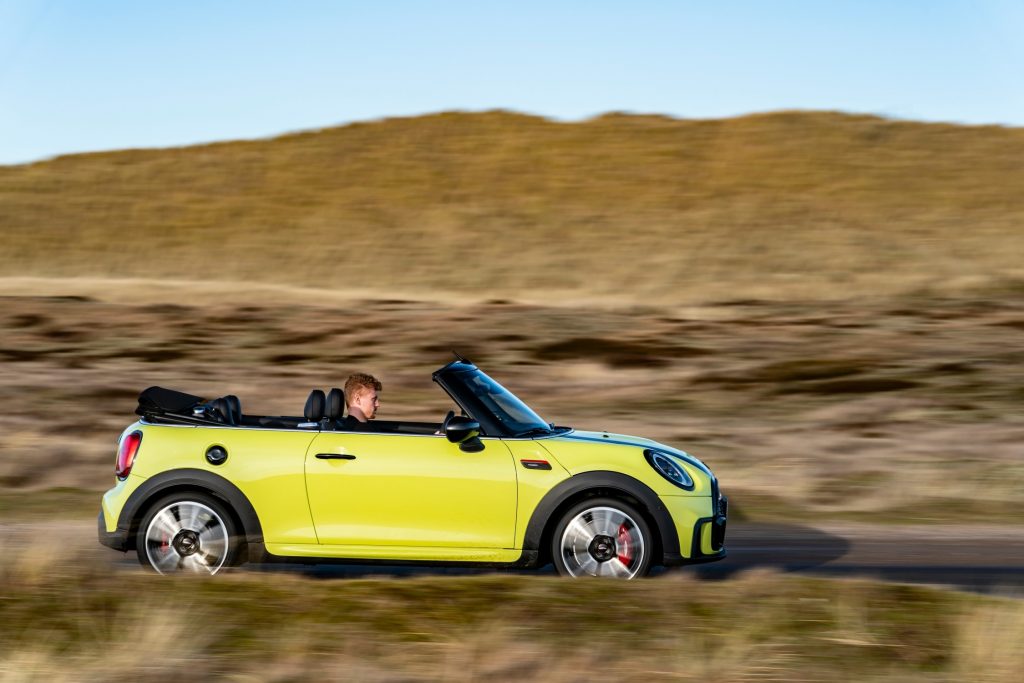


Doch längst nicht überall auf Sylt steht der Mensch im Konflikt mit den Kräften der Natur. Neben 40 Kilometern herrlichstem Sandstrand zählen auch zwölf Naturschutz- und sieben Landschaftsschutzgebiete zur Insel. Mitten durch die Heidelandschaft führt eine Mautstraße zum „Ellenbogen“, dem nördlichsten Punkt Deutschlands. Dieses Stück der Insel ist in Privatbesitz und steht unter Naturschutz. Bis zum Leuchtturm von List führt eine schmale Straße, eine Mischung aus verlegten Betonplatten und zerfurchtem Asphalt. Eine einzigartige Einöde mit Salzwiesen, Strandhafer und wildem Thymian. Schafe kreuzen den Weg, Tausende von Vögeln schwirren umher, der Wind scheint unabänderlich zu wehen, seine Richtung zu ändern und ständig zusammen mit der Brandung neue Melodien zu summen.

Am alten Hafen von List entstand zu Beginn der 70er Jahre die „nördlichste Fischbude Deutschlands“. Was mit einem Bauchladen und Räucheraal begann, wandelte sich in eines der erfolgreichsten Gastronomie-Unternehmen des Landes mit inzwischen bundesweit 40 Standorten. Jetzt auf der Karte: Garnelen und Champagner. Und doch beeindruckt auch an der Ostküste Sylts vor allem die Natur. Sie ist Teil des Wattenmeers, das seit 2009 zum UNESCO-Welterbe gehört. Die Ostküste Sylts ist auch Zwischenstation für Zugvögel auf dem Weg gen Süden. Bis zu zwölf Millionen Tiere rasten jeden Herbst im Wattenmeer.
Auf dieser Wattseite liegt auch Keitum. Hier zeigt sich der Wohlstand auf andere Art als in Kampen. Alte Reetdachhäuser liegen hinter hohen Hagebutten-Hecken, zur Kurzstrecken-Fortbewegung dienen Fahrräder anstelle von Sportwagen, Gummistiefel statt High-Heels, dicke sechsfädige Cashmere-Pullover statt Glitzerjacken. Alles ist hier ein Stück unaufgeregter, gelassener, hanseatischer. Und wer auf Sylt heiratet, lässt sich in der Keitumer St. Severin Kirche trauen, dem ältesten Sakralbau in Schleswig-Holstein.
Wer es besonders ruhig mag, steuert Morsum im äußersten Osten der Insel an. Der Ort ist von Wiesen und Weiden, Deichen und Heidelandschaft umgeben. Morsum war einst eines der ersten Siedlungsgebiete der Friesen auf Sylt. Hauptattraktion ist das Morsum-Kliff mit seinen schräg laufenden Farbabstufungen, Zeugnis der Millionen Jahre alten Erdgeschichte. Hier zeigt sich die Insellandschaft weitaus beständiger als an anderen Stellen Sylts, etwa in Rantum, wo zwischen See- und Wattseite nur noch rund 550 Meter liegen, oder in Hörnum, dessen Südspitze durch Erosion Jahr für Jahr schrumpft.



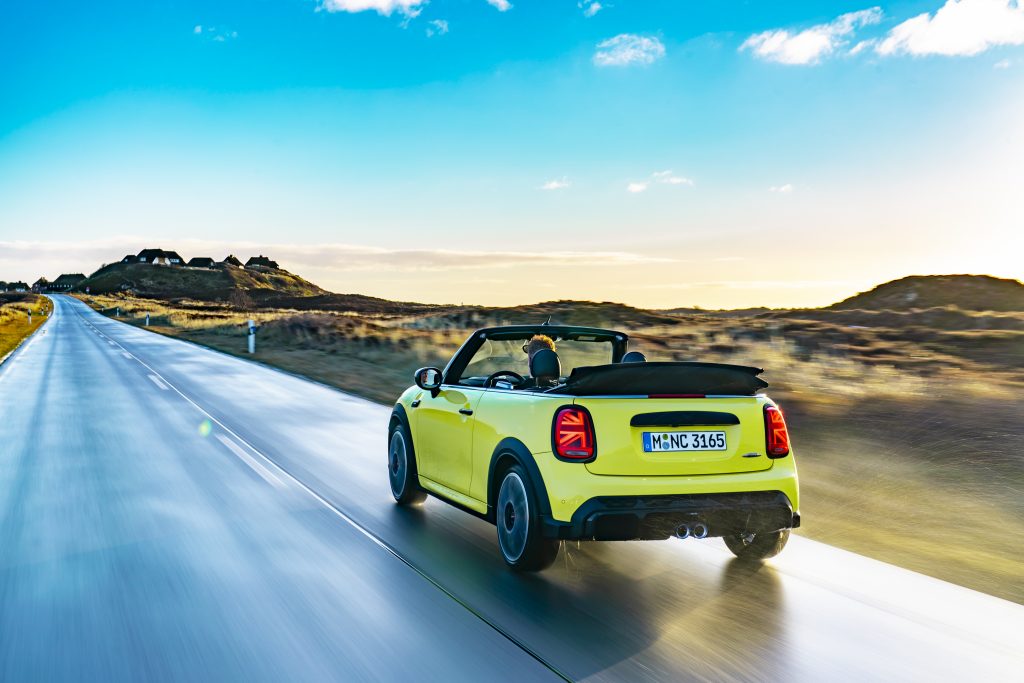
In Rantum entstand in den 1930er-Jahren ein Stützpunkt für Wasserflugzeuge. Seit der Renaturierung Mitte der 1960er-Jahre ist das Gebiet ein Vogelschutzgebiet – ein Fliegerhorst der zivilen Art sozusagen. Den heutigen Besuchern ist Rantum eher durch die „Sansibar“ ein Begriff, eines der bekanntesten Restaurants der Insel. Von Hörnum aus starten Ausflugsschiffe zu den Seehundbänken und den Nachbarinseln. Der Leuchtturm des Ortes gehört zu den beliebtesten Fotomotiven auf Sylt. Die Naturgewalten der Nordsee sind in Hörnum besonders präsent. Geradezu gefräßig nagt die Nordsee permanent am Strand der Hörnum-Odde, mit Sandaufspülungen wird den Verlusten Jahr für Jahr entgegengewirkt. Die urtümlichen Kräfte der Natur, das Rauschen der Brandung, das Geschrei der Möwen, der Wind im Haar und die salzige Luft machen den Reiz der Insel Sylt aus, der sich beim Offenfahren im MINI John Cooper Works Cabrio besonders intensiv erleben lässt.
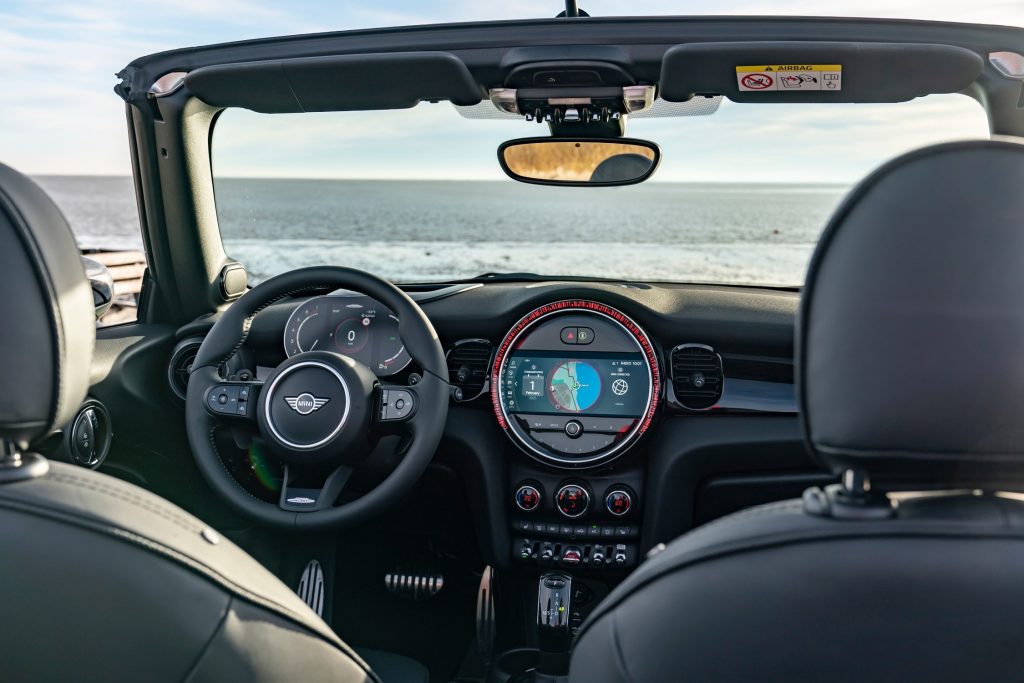
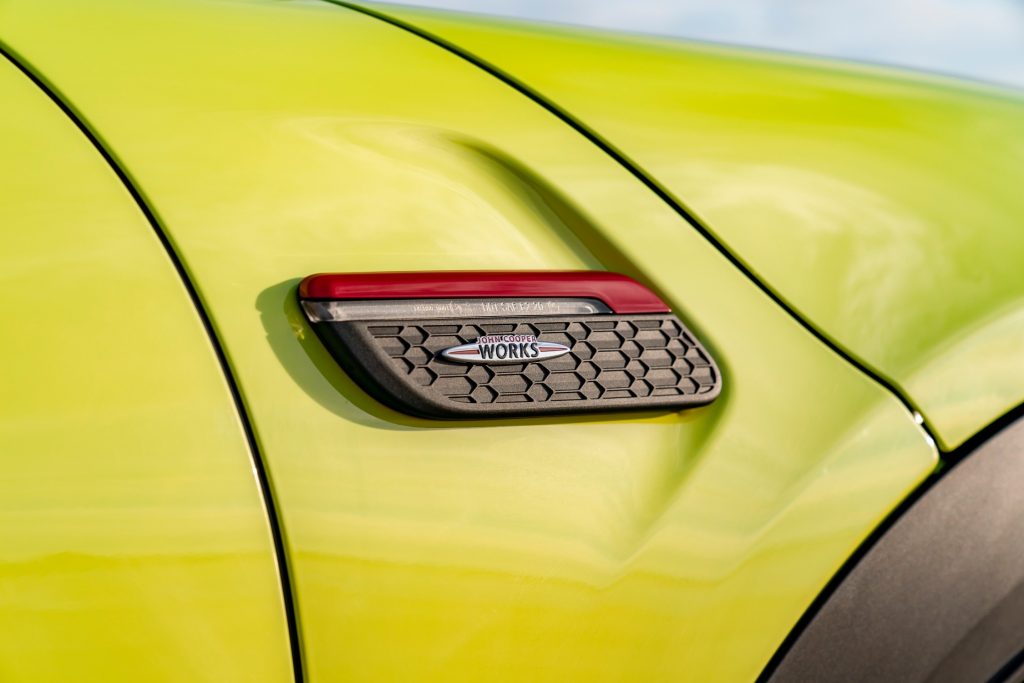

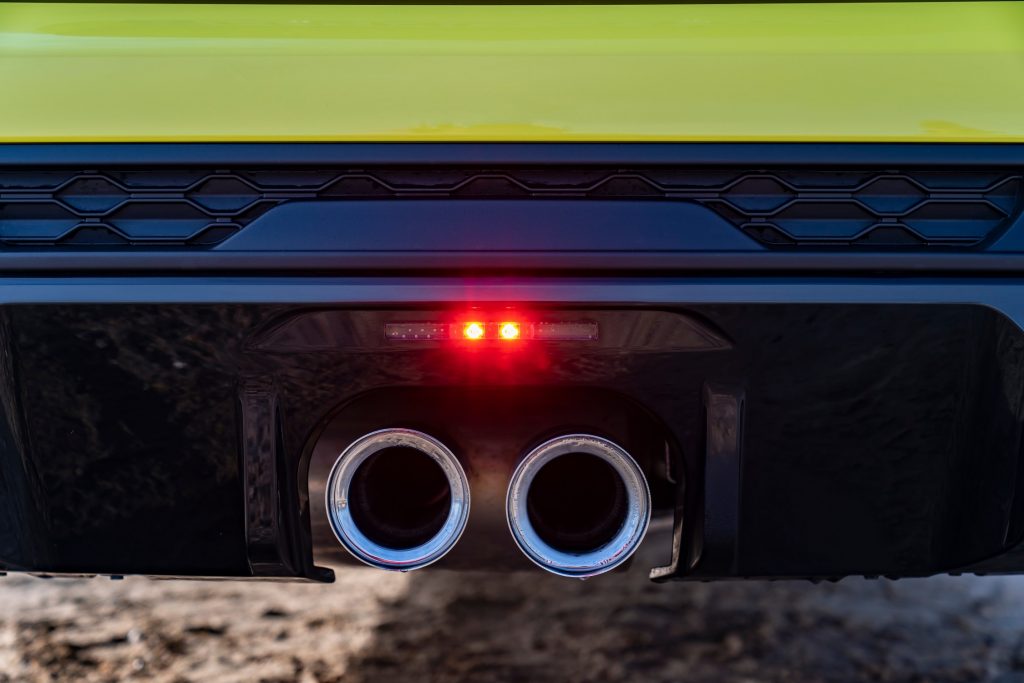
| Grundpreis | D 37.200 €/ A 38.950 € |
|---|---|
| Außenmaße | 3874 x 1727 x 1415 mm |
| Kofferraumvolumen | 215 bis 731 l |
| Hubraum / Motor | 1998 cm³ / 4-Zylinder |
| Leistung | 170 kW / 231 PS bei 5200 U/min |
| Höchstgeschwindigkeit | 242 km/h |
| Verbrauch | 6,7 l/100 km |
Mehr Infos https://www.mini.de/de_DE/home/range/john-cooper-works.html
https://www.mini.at/de_AT/home/range/john-cooper-works.html
Fresh sea breeze and stormy wind in your hair: On the island of Sylt in the MINI John Cooper Works Convertible.
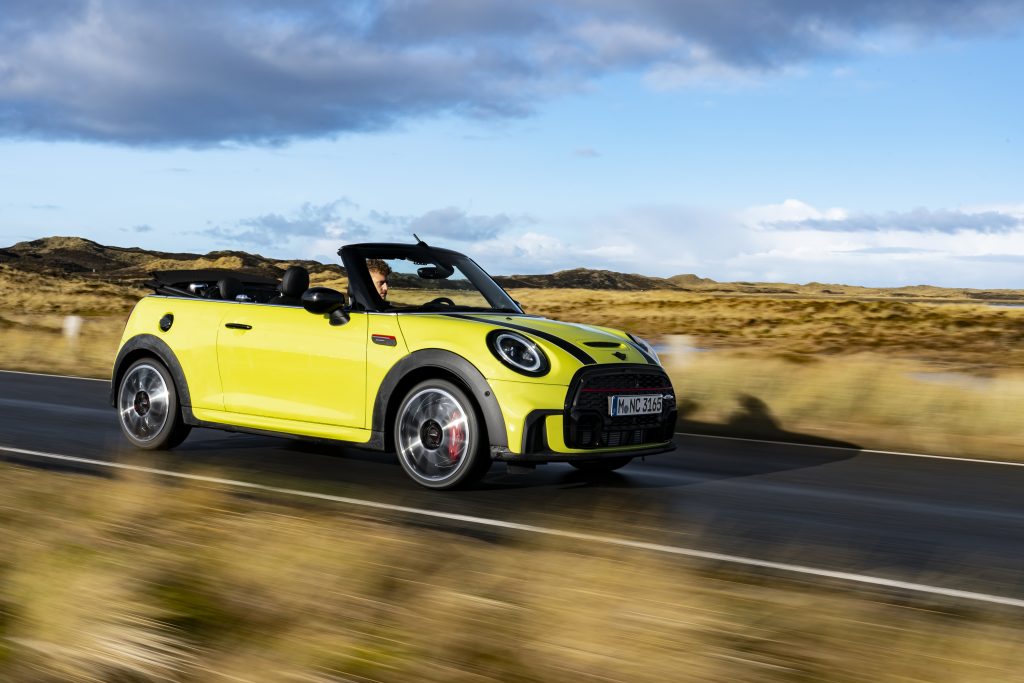
Germany’s northernmost island is worth a visit at any time of year. There is much to discover between mudflats and waves. In-restaurants and bars as well as top-class shopping venues alternate with unspoilt nature and mile-long beaches. And in between, there are plenty of opportunities for open-air driving fun in the salty North Sea air.
When Hamburg residents speak quite unpretentiously of taking a trip “to the island”, it often sounds as if they’re just taking a quick drive to another part of the city. Yet Sylt lies at the very top of North Frisia and is thus still around 180 kilometres away from the Hanseatic city as the crow flies. The quickest route is via motorway 7, making it the ideal choice for a short trip with the MINI John Cooper Works Convertible A few kilometres beyond the city limits, the speed limit is lifted. Now the 170 kW/231 hp four-cylinder turbo engine of the extremely sporty four-seater can really make sure that the distance between city and island actually shrinks by the minute.

The fast ride ends shortly before Flensburg. From there it’s just under 50 kilometres on country roads to the „Sylt Shuttle“ in Niebüll. The car park in front of the loading station is car-free. The MINI John Cooper Works Convertible rolls onto the motorrail train at walking pace, accompanied by the typical „clack, clack, clack“ as it crosses the carriage lanes. Now all we can do is: Switch off the engine, apply the parking brake, open the windows and wait. And there it is, that incomparable mixture of North Sea air, salt on your lips and the crying seagulls. The motorrail train travels a short distance through small villages and over flat land, then the wagons roll onto the ten-kilometre-long Hindenburgdamm, which was inaugurated in 1927 and became the real driver of Sylt tourism. From that time on, artists such as Emil Nolde, Hermann Hesse or Stefan Zweig felt just as magically attracted to the North Sea island as intellectuals, bon vivants and actors such as Marlene Dietrich, Hans Albers or famous athletes like Max Schmeling. Thomas Mann noted in the guest book of the artists‘ boarding house „Kliffende“ in Kampen in 1928: “I have lived deeply by this shattering sea.“
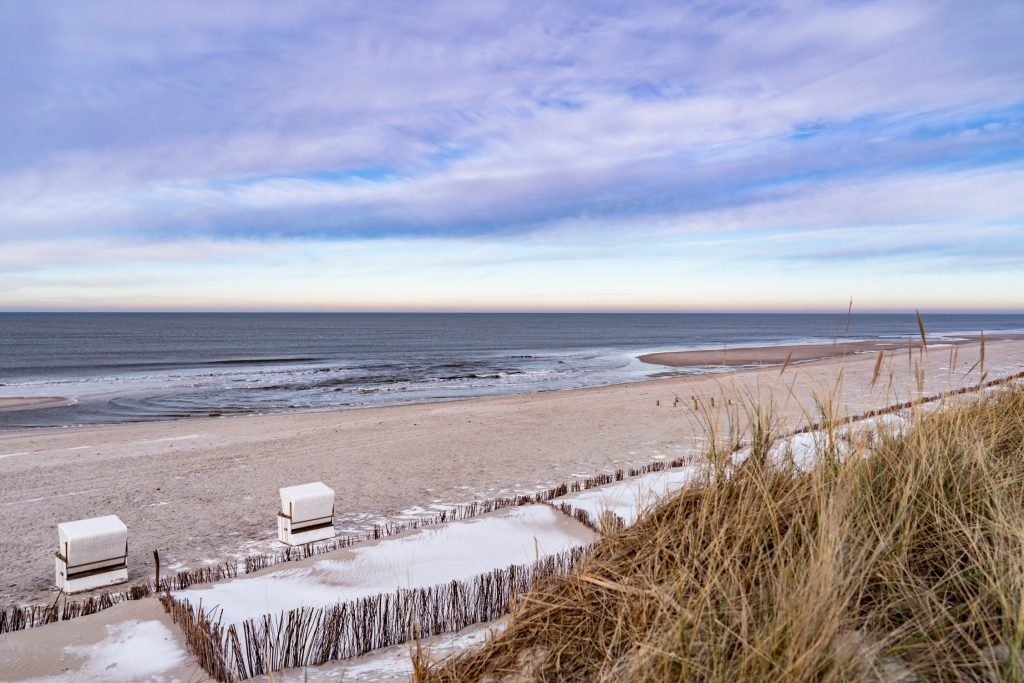
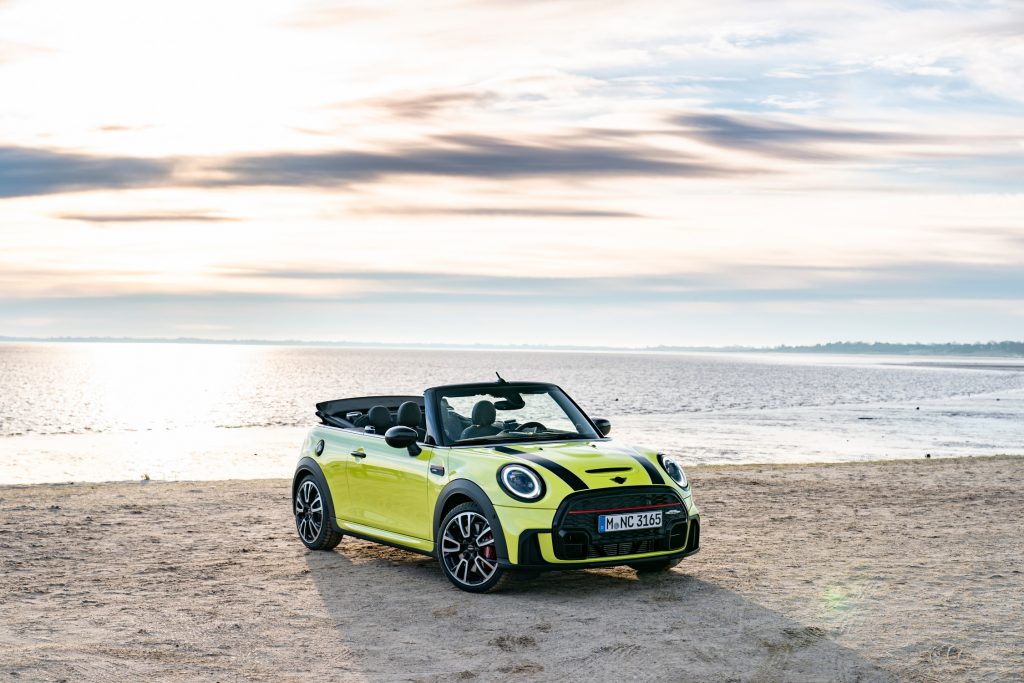


The crossing to Westerland station takes just under an hour. We quickly drive off the motorrail train and take a short walk to the Miramar Hotel, one of the oldest hotels on the island with a magnificent view over the Westerland spa promenade and the sea. This morning the sky is as blue as in a Nolde painting. So, on the outskirts of Westerland, it’s time to open the top. You can also do this while driving at a maximum of 30 km/h. It takes 18 seconds. Then the MINI John Cooper Works Convertible takes off along the dead straight country road heading north. The wind blows into the interior at gale force. But our senses take in more: this intense, salty sea air, the rich, earthy aroma of the tidal flats, the herbaceous, wild scent of the dunes – and a distinctive landscape with small hills and shaggy grass that changes colour depending on the wind and light.


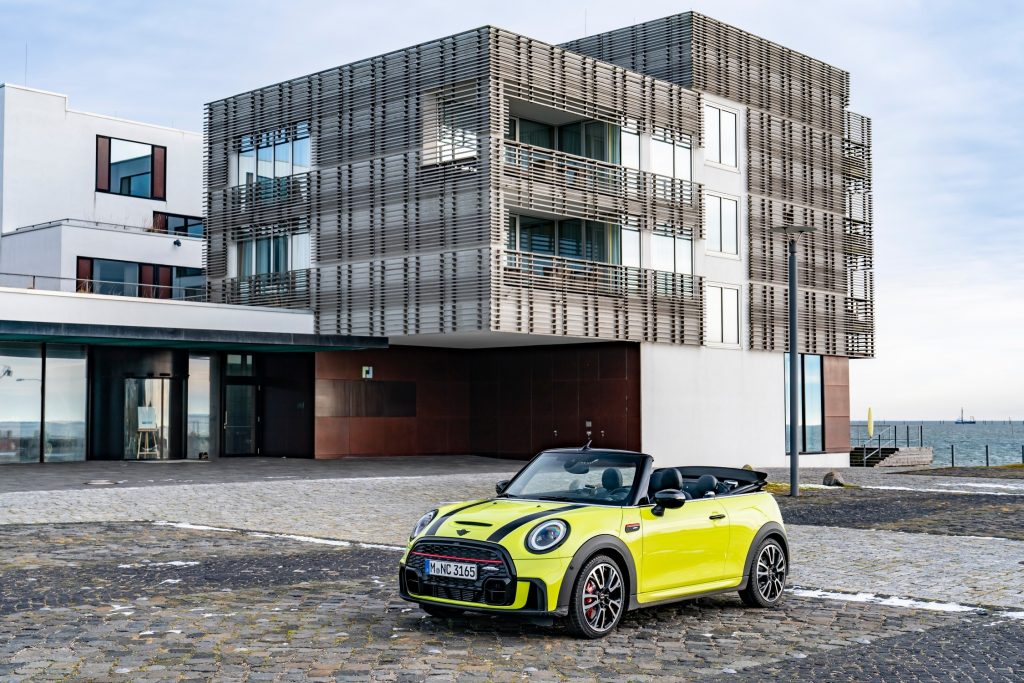

After a good six kilometres we reach Kampen. The place is loved by some for its glamour, shunned by others because of celebrities and their exalted behaviour. An artists‘ colony in the pre-war period, Kampen was awakened from its slumber in the 1960s by the bon vivant and photographer Gunter Sachs. The corporate heir held wild parties on the hitherto tranquil island – and especially in Kampen. On the “whisky mile”, where luxury vehicles abound in the summer, there is a high density of those who consider themselves to be particularly important. Pretty much at the end of Kampen’s Strönwai, which is the street’s real name, is the „Pony Club“, a classy bar and celebrity disco for almost 60 years, which Gunter Sachs helped to make even more popular when he drove his classic Mini right up to the dance floor one evening. The MINI John Cooper Works Convertible doesn’t put on too discreet a show either on its drive through Kampen.

Its new Zesty Yellow bodypaint makes it an eye-catcher everywhere. But the open-top four-seater wears this bold colour with style. The new reduced design language draws attention to the MINI’s hallmark design features, such as the hexagonal radiator grille and the round headlights. The Union Jack design rear lights are a subtle reminder of the brand’s British origins. And the powerful contours of the rear diffuser, in the centre of which the two 85-millimetre stainless steel tailpipes of the exhaust system protrude into the open air, also signal authentic sportiness. This also applies to the sound of the sports exhaust system, which underscores the spirited sprinting capability of this open-top athlete.

Holidays on Sylt are very hip, the demand for accommodation continues to increase. 4.8 million tourists came in 2019. Property prices are reaching dizzying heights. Those who can afford it don’t want to rent, they want to buy. Preferably one of the typical thatched houses. The consequence is that entire villages are now ghost towns that are only busy in summer and at weekends or on public holidays. In Kampen, two thirds of the houses are now holiday villas. The houses are not bought to live in, but to own. As a result, locals can no longer afford their island. Most of them now live on the mainland – as do the seasonal workers. 150,000 of them work on Sylt during the high season. Only 20,000 people are registered as residents. But Kampen also makes visitors aware how impermanent everything is. The „Kliffende“, one of Sylt’s most traditional buildings, is only 40 metres as the crow flies from the edge of the Kampen cliff. Every year, fierce autumn and winter storms gnaw at the cliff and the raging sea reclaims piece after piece of cliff. It was just over 20 years ago that five wealthy private individuals bought the house. Now they have to watch how the eight million investment slowly disappears – or they have to put a lot money into additional coastal protection. But man is not in conflict with the forces of nature everywhere on Sylt. In addition to 40 kilometres of beautiful sandy beach, the island also boasts twelve nature reserves and seven landscape conservation areas. A toll road leads through the middle of the heath-covered landscape to the “Ellenbogen” (elbow), the northernmost point in Germany. This part of the island is privately owned and protected. A narrow road leads up to the List lighthouse, a mixture of laid concrete slabs and rutted asphalt. A unique wasteland with salt marshes, marram grass and wild thyme. Sheep cross your path, thousands of birds buzz around, the wind seems to blow relentlessly, changing its direction and constantly humming new melodies together with the surf. The “northernmost fish stall in Germany” was built at the beginning of the 1970s at the old harbour in List. What began with a vendor’s tray and smoked eel turned into one of the country’s most successful catering businesses, now with 40 locations nationwide. The menu now features: Prawns and champagne. And yet, even on the east coast of Sylt, it is above all nature that stuns all visitors to the island. It is part of the Wadden Sea tidal flats, which have been a UNESCO World Heritage Site since 2009. The east coast of Sylt is also a stopover for migratory birds on their way south. Up to twelve million animals rest in the Wadden Sea every autumn. Keitum is also located on this side of the tidal flats. Here, prosperity shows itself in a different way than in Kampen. Old thatched-roof houses lie behind high rosehip hedges, bicycles instead of sports cars are used for short-distance travel, rubber boots instead of high-heels, thick six-thread cashmere jumpers instead of glittering dresses and jackets. Here, everything is a bit more laid back, more Hanseatic. And those who get married on Sylt do so in Keitum’s St. Severin Church, the oldest sacred building in Schleswig-Holstein. If you really like it quiet, head for Morsum in the extreme east of the island. The village is surrounded by meadows and pastures, dikes and heath land. Morsum was once one of the first Frisian settlements on Sylt. The main attraction is the Morsum cliff with its sloping colour gradations, evidence of millions of years of geological history. Here the island landscape is far more stable than in other places on Sylt, for example in Rantum, where there is only about 550 metres between the sea and the tidal flats, or in Hörnum, whose southern is eroding away year upon year.
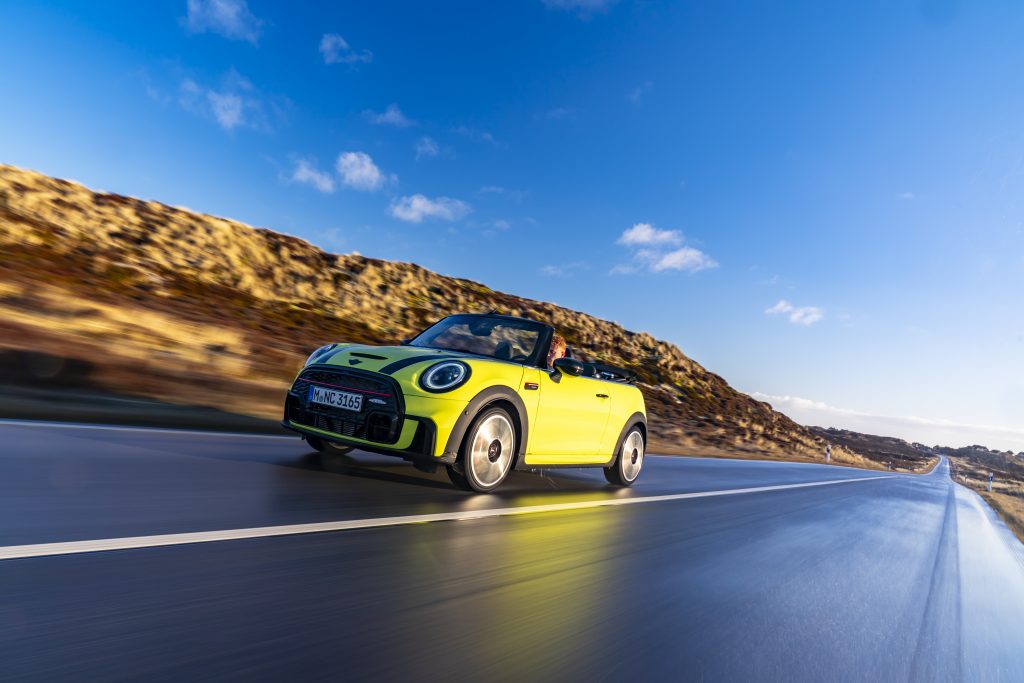


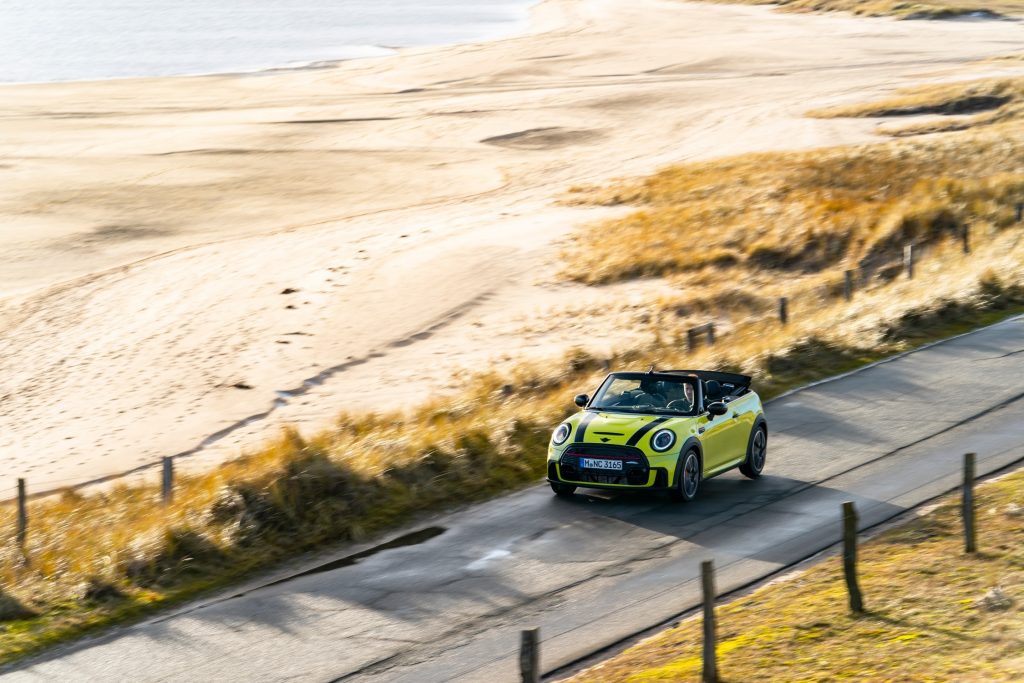
A base for seaplanes was built in Rantum in the 1930s. Since its renaturation in the mid-1960s, the area has been a bird sanctuary – an air base of the civilian kind, so to speak. Today’s visitors are more familiar with Rantum because of the „Sansibar“, one of the most famous restaurants on the island. Excursion boats depart from Hörnum to the seal banks and the neighbouring islands. The town’s lighthouse is one of the most popular photo motifs on Sylt. The natural forces of the North Sea are particularly present in Hörnum. The North Sea permanently gnaws away at the beach of Hörnum-Odde, and the losses are counteracted year after year with sand flushing. The primal forces of nature, the roar of the surf, the cry of the seagulls, the wind in your hair and the salty air make up the charm of the island of Sylt, which can be experienced particularly intensively when driving with the top down in the MINI John Cooper Works Convertible.
-Ends-
images BMW Group
More information https://www.mini.com/en_MS/home.html
Hinweis im Sinne der Corporate Compliance Leitlinien: Die Teilnahme an internationalen Fahrzeug- und Technikpräsentationen erfolgt großteils auf Basis von Einladungen seitens der Automobilimporteure oder Hersteller. Diese stellen auch die hier zur Besprechung kommenden Testfahrzeuge zur Verfügung.
